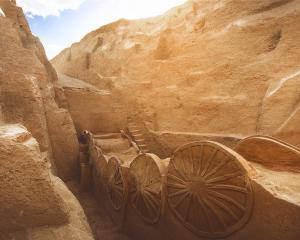
Born in March 603 AD, he ruled the state of Palanque in Mexico for 68 years, the fifth-longest recorded reign of any monarch. The Maya script long defied translation until the 1970s when breakthroughs led by Tatiana Proskouriakoff opened a great archive of documents. The king’s name means Sun King Shield, although the word Janaab remains undeciphered. At the great king’s death on August 29, 683, he was interred in the Temple of the House of the Nine Sharpened Spears, now known as the Temple of the Inscriptions. The discovery of the tomb resonates with the exploits of Indiana Jones. In 1948, archaeologist Alberto Ruz Lhuillier began clearing the rubble from a concealed staircase and four years later and nearly 25m deeper, he entered the tomb chamber and was confronted by a massive carved stone sarcophagus that depicted Pakal entering the underworld to be deified. Removal of the lid revealed the royal skeleton, adorned with a magnificent jade death mask and a profusion of other jade ornaments, all symbols of royalty. The King’s teeth confused — there was far less wear than would be expected of an octogenarian, but this was due to his soft royal diet, it seems.
The Maya realm was divided into many competing statelets, and the life of Pakal was typically dominated by constant wars, the capture of sacrifice of prisoners. His death mask was one of the most visited items in the National Museum and the two robbers tried to sell it and other looted items to the bosses of a drug cartel for a billion dollars. Intense police surveillance finally tracked them down in 1989 and most of the artefacts were recovered. The leading thief was sentenced to 22 years in prison and the mask returned to its rightful place.












